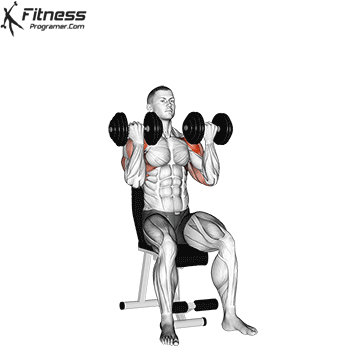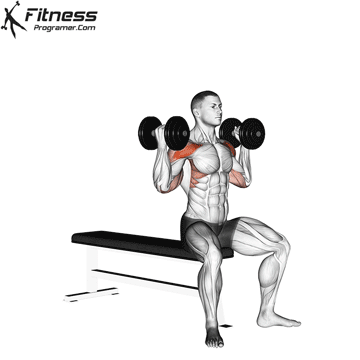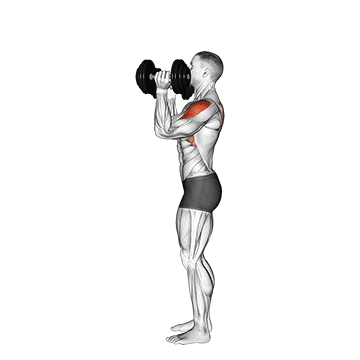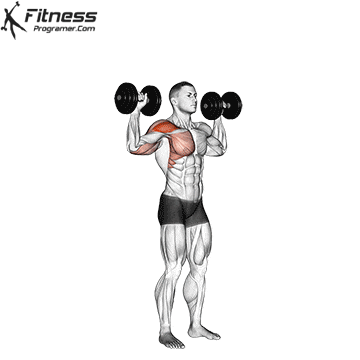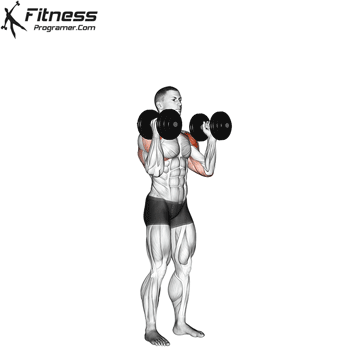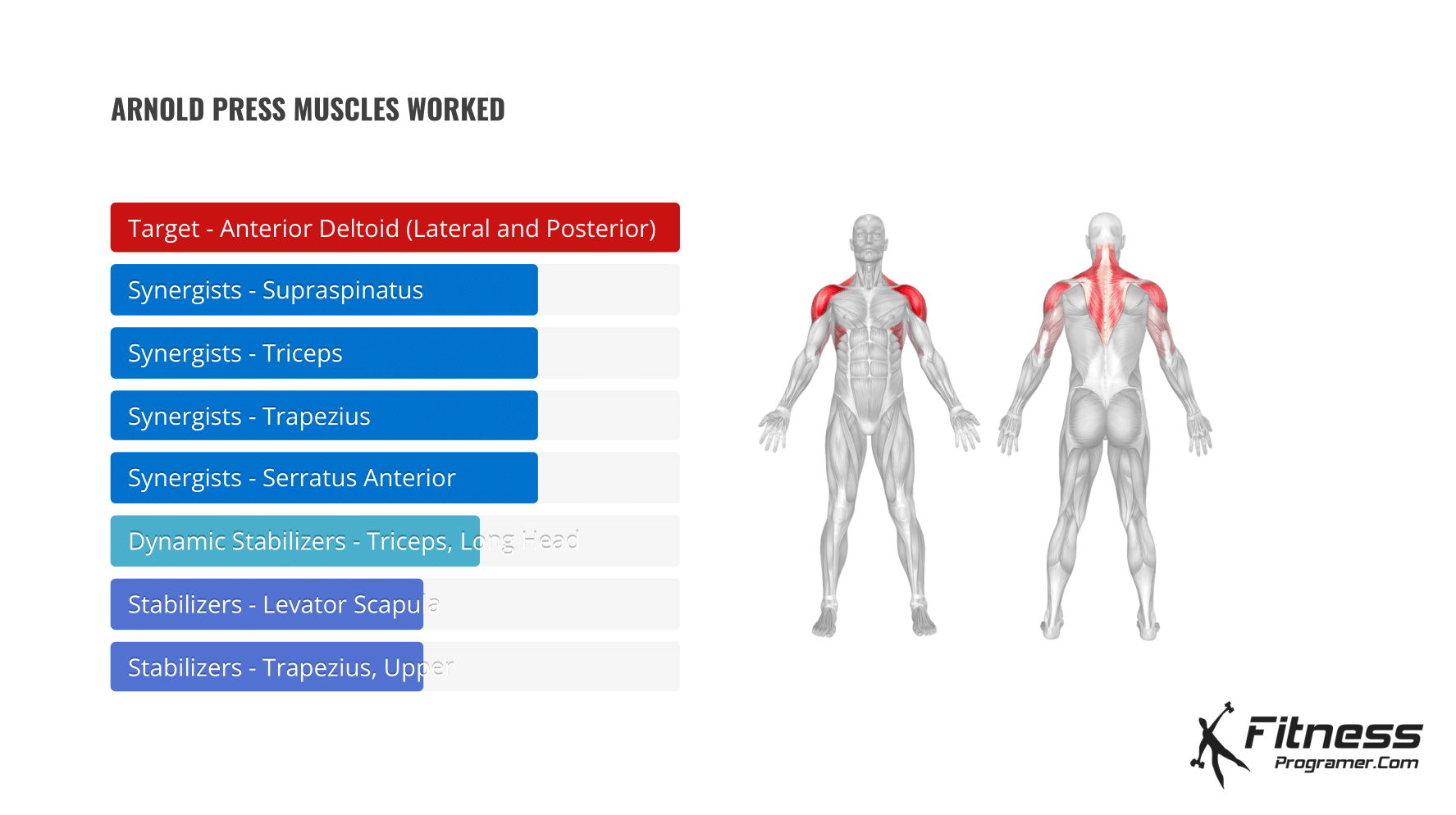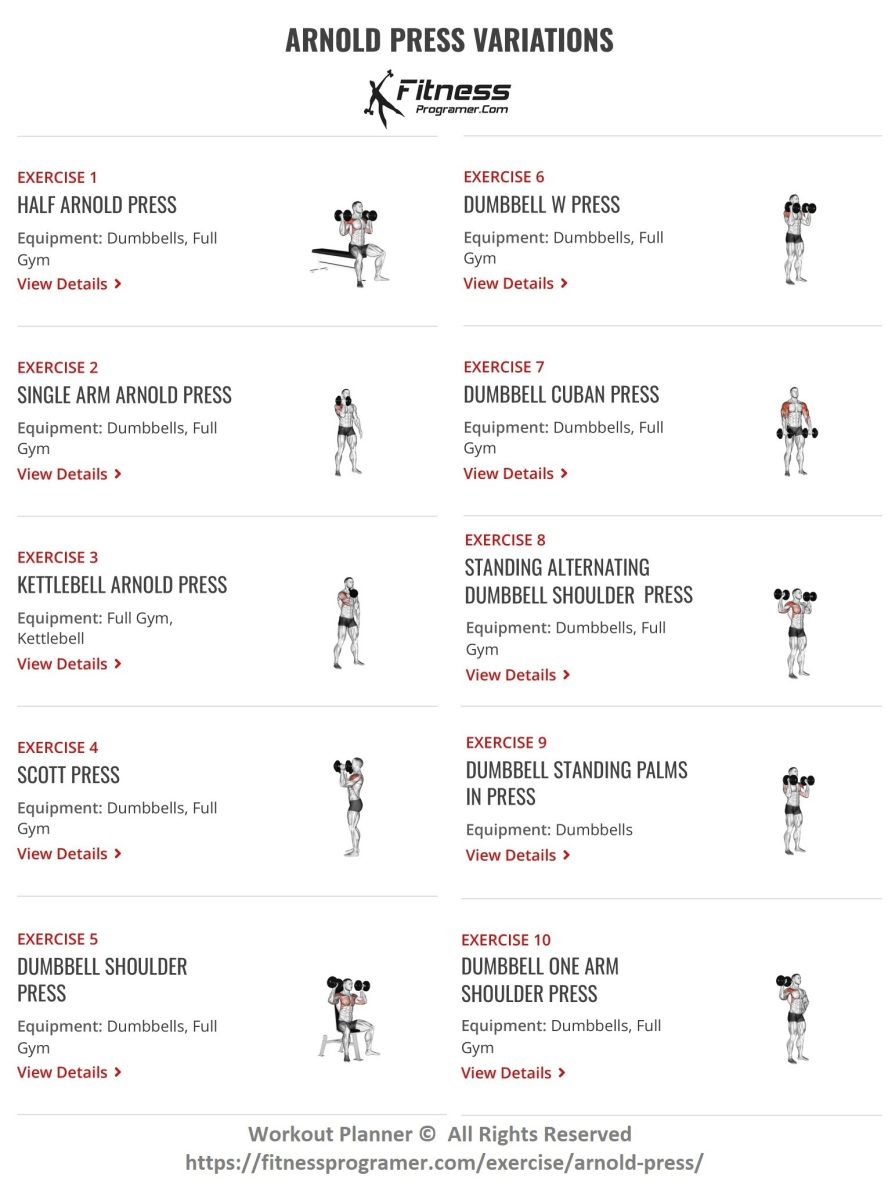Arnold Press Overview
The Arnold Press is a shoulder exercise that combines rotation and pressing movements, developed by Arnold Schwarzenegger in the 1970s. A variation of the standard shoulder press, the Arnold Press targets all of the shoulder muscles, including the front, side and rear deltoids.
How to Perform the Arnold Press
Step-by-Step Guide
- Starting Position:
- Sit on a bench with back support or stand upright.
- Hold dumbbells at shoulder height with your palms facing your body.
- Press and Rotate:
- As you press the dumbbells overhead, rotate your wrists outward so your palms face forward at the top of the movement.
- Lower and Reset:
- Lower the dumbbells back to the starting position while rotating your wrists inward, returning your palms to face your chest.
Tips for Proper Form
When performing the Arnold Press, it’s important to use proper technique to avoid injury and maximize results.
- Maintain Proper Form: Avoid arching your back or rounding your shoulders. Keep your core engaged and your back straight.
- Control the Movement: Focus on a slow and controlled movement, avoiding jerky motions.
- Choose Appropriate Weight: Heavy dumbbells can compromise form, increasing the risk of shoulder strain. Start with a lighter weight and gradually increase the weight as your strength improves.
Safety Considerations
- Warm-Up Thoroughly: Prepare your shoulders with dynamic stretches or light dumbbell movements like external rotations.
- Listen to Your Body: If you experience pain, reduce the weight or consult a fitness professional for guidance.
Benefits of the Arnold Press
1. Targets deltoid muscles:
- The Arnold Press targets multiple muscles in the shoulders, including the anterior, medial, and posterior deltoids, as well as the triceps and upper back muscles. This makes it an excellent choice for a more balanced and comprehensive shoulder workout.
2. Improves shoulder stability:
- The rotational movement of the Arnold Press requires more shoulder stability than other shoulder exercises, which can help reduce the risk of shoulder injuries and improve shoulder mobility.
3. Enhances muscle symmetry:
- The rotational movement of the Arnold Press helps improve muscle symmetry and balance between the left and right sides of the body, which is important for overall strength and aesthetics.
4. Adds variety to your routine:
- Including the Arnold Press in your shoulder routine can add variety and challenge to your workouts, which can help prevent boredom and plateauing.
5. Can improve other lifts:
- The Arnold Press can help improve other lifts, such as the Overhead Press, by improving shoulder stability and strength.
Cons of Arnold Press:
1. Requires proper technique:
- Like all weightlifting exercises, the Arnold Press requires proper technique to avoid injury and maximize results. It’s important to use a weight that is appropriate for your fitness level and to start with a lighter weight and gradually increase as your strength improves.
2. Can be challenging for beginners:
- The rotational movement of the Arnold Press can be challenging for beginners, especially those who are new to weightlifting. It’s important to start with lighter weights and focus on proper form and technique.
3. Not suitable for those with shoulder injuries:
- The Arnold Press can be too challenging for those with shoulder injuries or mobility issues. If you have a pre-existing condition, it’s important to consult with a healthcare professional before attempting this exercise.
4. May not be suitable for all fitness goals:
- While the Arnold Press is an effective exercise for building overall upper body strength and improving shoulder stability, it may not be suitable for all fitness goals. For example, if your primary goal is to build muscle mass in the shoulders, other isolation exercises such as the lateral raise or front raise may be more effective.
Arnold Press Muscles Worked
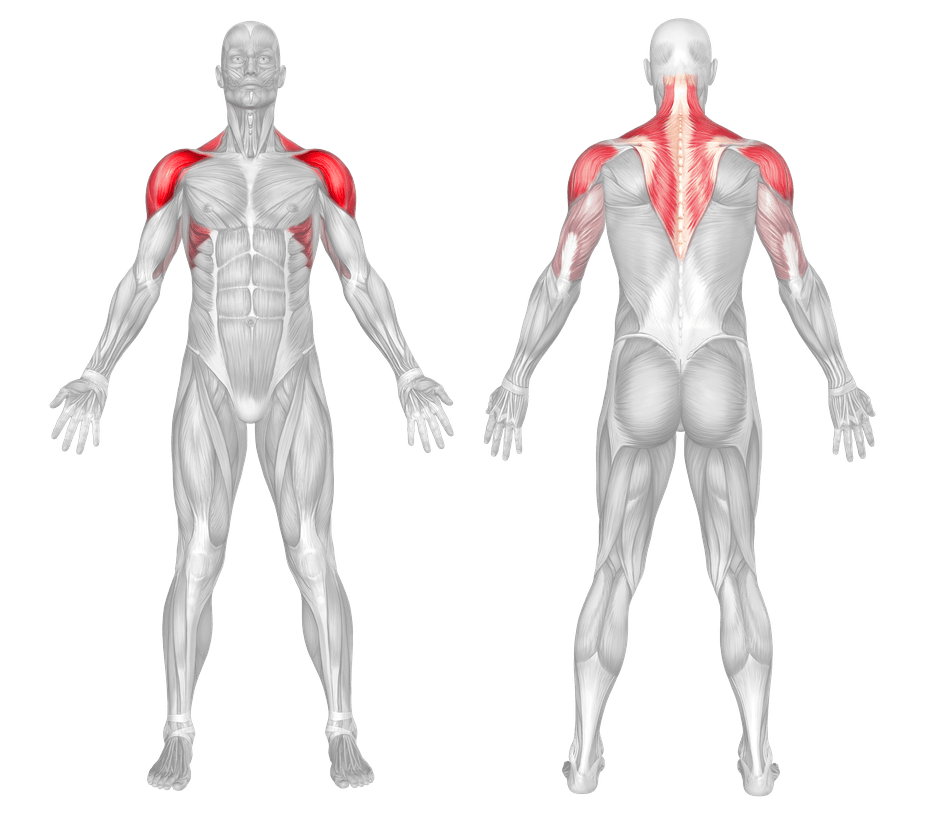
Deltoids (anterior, medial, and posterior):
- The deltoids are the main target of the Arnold Press. The anterior deltoid helps lift the arm to the front of the body, while the medial and posterior deltoids help lift the arm to the side and back of the body, respectively.
Triceps:
- The triceps are the secondary muscles worked during the Arnold Press, as they help extend the arm during the upward phase of the movement.
Upper back muscles:
- The upper back muscles, including the rhomboids and traps, also assist in stabilizing the shoulders and maintaining proper form during the exercise.
Supraspinatus:
- The supraspinatus muscle is responsible for initiating the abduction of the arm, meaning it is activated when lifting the arm away from the body, as well as stabilizing the shoulder joint during movement. While the supraspinatus muscle is not directly targeted by the Arnold Press, it is involved in the movement of the shoulder joint and can be engaged to some degree as a stabilizer during the exercise.
Levator scapula:
- The levator scapula muscle works in conjunction with other muscles of the shoulder and neck to allow movement of the scapula, which is important for proper shoulder function. Although the levator scapula is not a primary muscle worked during the Arnold Press, it can be engaged to some degree as a stabilizer.
Serratus Anterior:
- The serratus anterior muscle plays an important role in scapular movement, as it is responsible for protracting (moving the scapula forward) and stabilizing the scapula against the rib cage. The serratus anterior, along with other muscles of the shoulder and upper back, can help to maintain proper scapular positioning during the exercise.
Arnold Press Vs Overhead Press
The Arnold Press and Overhead Press are two popular shoulder exercises that are often compared to each other. Both exercises involve overhead lifting, but their execution methods differ.
In the case of the Arnold Press, lifting too much weight can cause damage to the shoulder joint, which is already at risk due to the rotational motion involved in the exercise. This can put the shoulder in a vulnerable position, especially for individuals with a history of shoulder injuries. In contrast, the Overhead Press has a simpler movement pattern and can be easier to perform, especially with heavier weights.
Comparison of the muscle activation in the Arnold Press and Overhead Press
Scientific Insights
Studies comparing the Arnold Press and Dumbbell Overhead Press reveal that the Arnold Press elicits higher muscle activation in the anterior and medial deltoids, making it more effective for targeting these areas.
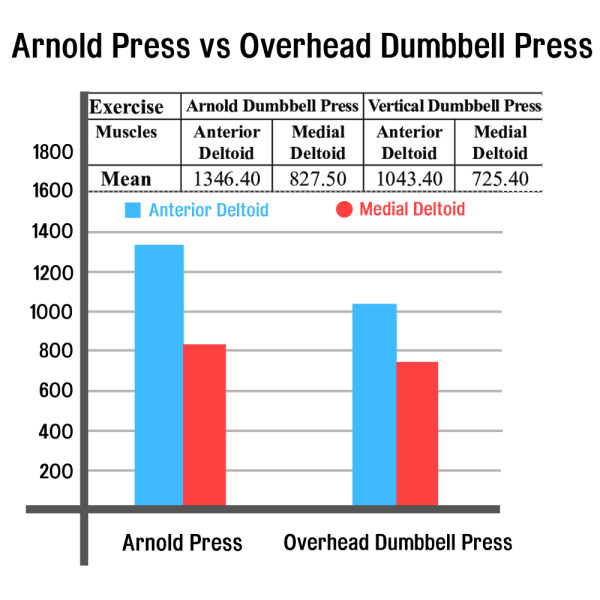
As a result, the Arnold Press works the front and side delts more in addition to the rear deltoid, but lifting more weight can be risky.
FAQs About the Arnold Press
Q: Can I do the Arnold Press if I have shoulder pain?
If you have existing shoulder issues, consult a physical therapist or fitness professional before attempting this exercise. You may need modifications or alternative movements.
Q: Is the Arnold Press better than the standard shoulder press?
It depends on your goals. The Arnold Press offers a greater range of motion and targets more muscles, but the standard press may allow heavier lifting for strength-building.
Q: How often should I include the Arnold Press in my routine?
For optimal results, perform it 1–2 times per week as part of a shoulder or upper-body workout.
Arnold Press Variations
Incorporating these variations into your shoulder workouts can help you achieve greater strength and definition in your shoulder muscles, while also keeping your workouts fun and interesting. As always, remember to start with a weight that is appropriate for your current fitness level and work your way up gradually to avoid injury.
Here are ten variations of the Arnold Press that you can incorporate into your shoulder workouts for added variety and intensity.

